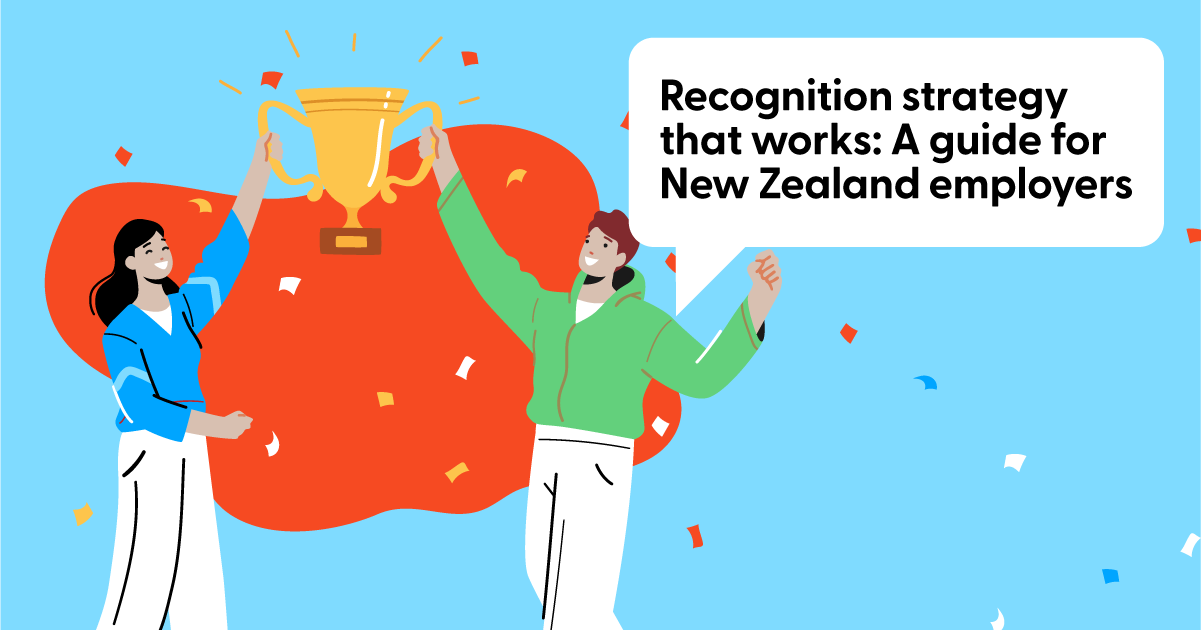In this article, we’ll break down the essentials of effective recognition—what it is, how to do it and who should be involved. Our goal is to help you build a solid strategy for personalised employee recognition that truly resonates.
Is just saying thank you enough?
For the vast majority of employees, a sincere “thank you” is more than enough for day-to-day recognition. It can simply be a verbal acknowledgement, although 2019 research by Deloitte revealed 36% of female and 28% of male employees would prefer a thank you in writing.
On the other hand, gifts and celebrations for recognising day-to-day achievements were preferred by only 7% of surveyed employees.
What should be recognised?
The short answer is: whatever each employee really wants you to recognise. A great way to find that out is reflective recognition[WJ1] . It’s a technique that starts by asking an employee open-ended questions, like:
- What are you most proud of (in your work)?
- What have you struggled with?
- What would you like more credit for?
Research shows most employees will be seeking recognition for a recent success, particularly the creative risk-takers and those who thrive on a challenge. More conservative mastery-focussed employees may prefer recognition related to their expertise or knowledge. And a collaborative people-person may prefer recognition for extra effort, helping others or putting the organisation’s values into action.
How should employees be recognised?
While a simple thank you will be well-received for day-to-day achievements, recognising more substantial contributions will normally require something extra. Once again, the most valued ‘extra something’ will depend on each employee’s preference. The good news is it’s not always about money.
In general, nearly half of all employee types would prefer an opportunity to learn and grow. This is particularly true for the challenge-lovers and creative risk-takers. Typically, only one in four people would rather be recognised with a salary increase, particularly more conservative mastery employees. A slightly smaller percentage would like some sort of high-performance score, and only one in ten might have a bonus at the top of their list.
Who should provide employee recognition?
The preference for recognition varies among individuals. Overall, recognition from peers, immediate managers or higher-level executives is equally valued. However, there are some clear preferences for specific groups:
- Almost half of challenge-lovers would prefer to be recognised by someone higher up than their manager.
- About 70% of creative risk-takers are evenly split between preferring recognition from higher-ups and colleagues.
- Only one in four of the conservative mastery employees will prefer recognition from colleagues, with the rest evenly split between their direct manager or someone higher up.
- Collaborative people-focused employees show a slight preference for recognition from their manager or a colleague, rather than someone higher up the ladder.
Should recognition be public or private?
Some employees love being invited onto a stage in front of a large group to receive their recognition. But most find a big show completely terrifying and repulsive.
The 2019 research conducted by Deloitte found less than one in five people would prefer their recognition to be shared with more than a few people. About half of the respondents preferred recognition that was shared with only a few others. And just over a third want recognition kept completely private.
Interestingly, within each option there wasn’t much variation between one type of employee and another. However, the least preferred option overall – public recognition – was slightly more favoured by go-getters and creative risk-takers than conservative employees and people-focused collaborators.
Next steps
These broad insights into effective recognition strategies can help you review current practices and prepare the foundations of a more effective programme. But it’s important to remember that personalisation is still the key, so be sure to read out article on reflective recognition.
Speaking of personalisation, one of the great things about the Boost employee benefits platform is it allows each employee to choose the rewards they want, when they want them.
